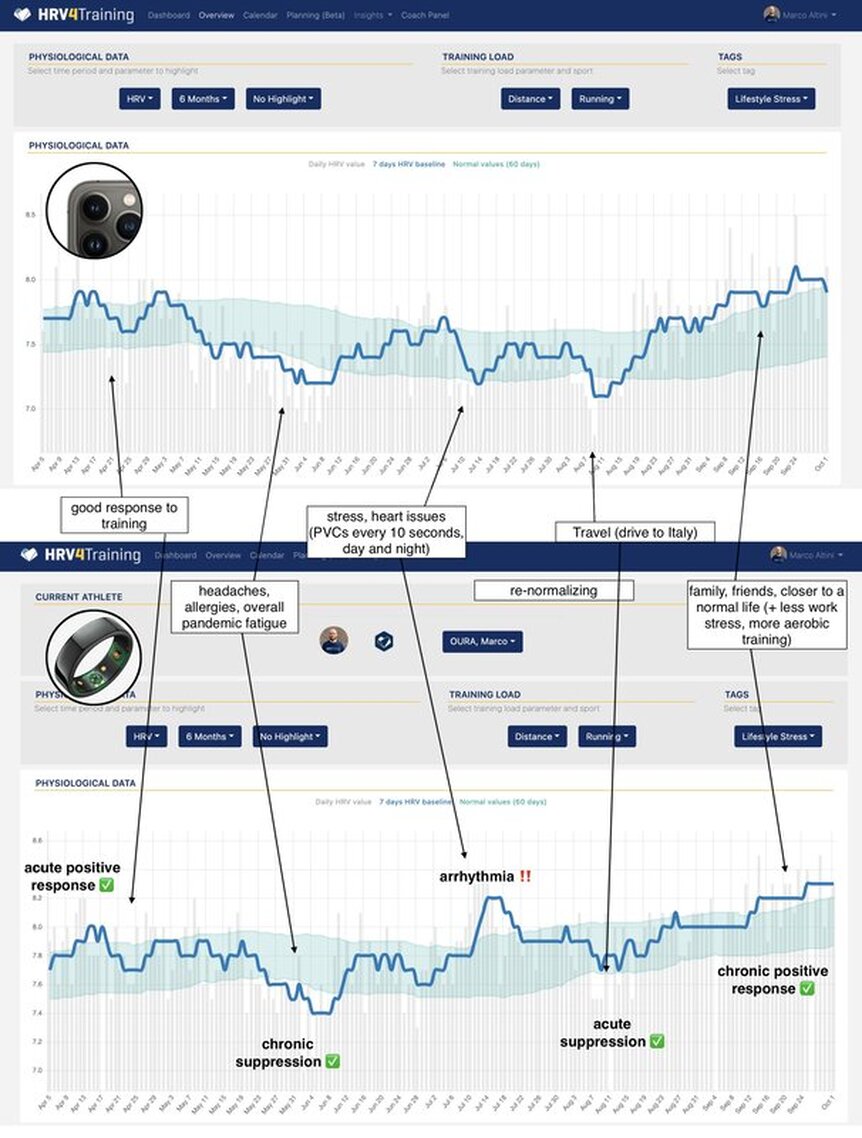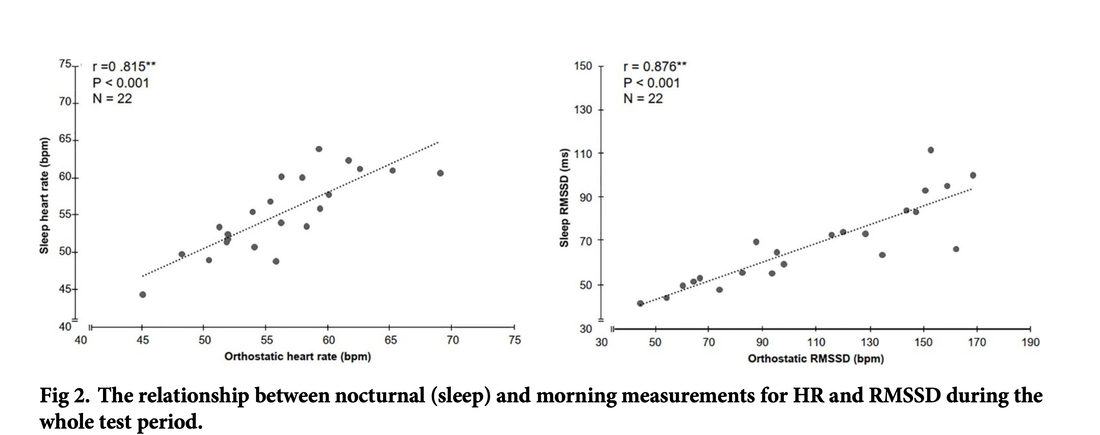|
Technology for Heart Rate Variability (HRV) measurement at rest is getting better every day. From our own approach using the phone camera in HRV4Training (validated, and independently validated), to the Oura ring, Polar Vantage V2 and Scosche Rhythm24 (plus of course, good chest straps like Polar H10), it has become really easy to capture high-quality HRV data. In a recent blog, I discussed the importance of using an accurate tool, sampling at the right time, and interpreting your data with respect to your normal values. I have often argued that provided you know what you are doing, morning and night measurements are equivalent in the long run. This does not mean that there are no differences on a daily basis (we'll get to that), but it means that these are both reliable way to assess baseline physiological stress. Check out an example of a few months of my own data, with annotations, here Application of interestWe first need to define our application of interest. Both heart rate and HRV can be used for different applications and measured under different conditions. In this blog, our application of interest is determining chronic physiological stress level, which derives from combined strong acute stressors (e.g. a hard workout, intercontinental travel) and long-lasting chronic stressors (e.g. work-related worries, etc.). By measuring the impact of various stressors (e.g. training or lifestyle) on our resting physiology (HR and HRV), we can make meaningful adjustments that can lead to better health and performance. Latest researchBack to morning vs night. Apart from my anecdotal data above showing a very good match between the two, what does the research say? In the latest paper looking at this exact question, "Evaluation of nocturnal vs. morning measures of heart rate indices in young athletes", Christina Mishica and co-authors report that "heart rate and RMSSD obtained during nocturnal sleep and in the morning did not differ". We can even look at the data for both heart rate and rMSSD, a marker of parasympathetic activity (the same feature used in HRV4Training or in the Oura ring), which indeed show great agreement: You can find the full text of the paper here. Important differencesAs I have tried to cover in this and other blog posts, morning and night measurements can be used to capture baseline physiological stress in response to acute and chronic stressors. Both methods have been used in different studies resulting in the same outcomes in terms of the relationship between HRV, training load, and recovery (see an overview here). While long term trends will be similar between these two methods, there are a few differences to keep in mind, mainly linked to these aspects:
Practical takeawaysWhat are the takeaways here?
In my opinion, when it comes to the data, there is no advantage in using one method or the other. However, if you prefer to wear something over the night, get a device that does so. If you prefer not to wear something during the night and just to take a measurement in the morning, then go that way. If your athlete can’t be bothered to take a morning measurement, get a device that tracks HRV during the night. If you are not sure this is for you, you can use your phone camera and invest as little as 10$ in measuring your physiology daily with an independently validated HRV app such as HRV4Training. Once again, if you like wearables, they can clearly capture high-quality HRV data as we sleep. Just make sure to use one that gives you the full night of data, as otherwise HRV measurements won't be reliable (as I discuss in greater detail here). My recommendation would be the Oura ring for this exact reason: most other sensors will provide automatically collected sporadic data points (e.g. 5 minutes during the night, like the Apple Watch does), which unfortunately are noisy and do not reflect underlying physiological stress very well. As an alternative, you can get the same data with a morning measurement taken with HRV4Training, the only validated camera-based app. Pretty simple and cost effective, as long as measuring in the morning works in your daily routine. This is great news as we all have different reasons to use one method or the other (cost, preference for passive measurements, etc.), but as long as we use valid tools, the same physiological processes can be captured over time. This consistency will help us move forward in many areas of research in which these sensors or apps are currently deployed. Stay in touch. Comments are closed.
|
Marco ALtiniFounder of HRV4Training, Advisor @Oura , Guest Lecturer @VUamsterdam , Editor @ieeepervasive. PhD Data Science, 2x MSc: Sport Science, Computer Science Engineering. Runner Archives
May 2023
|


 RSS Feed
RSS Feed